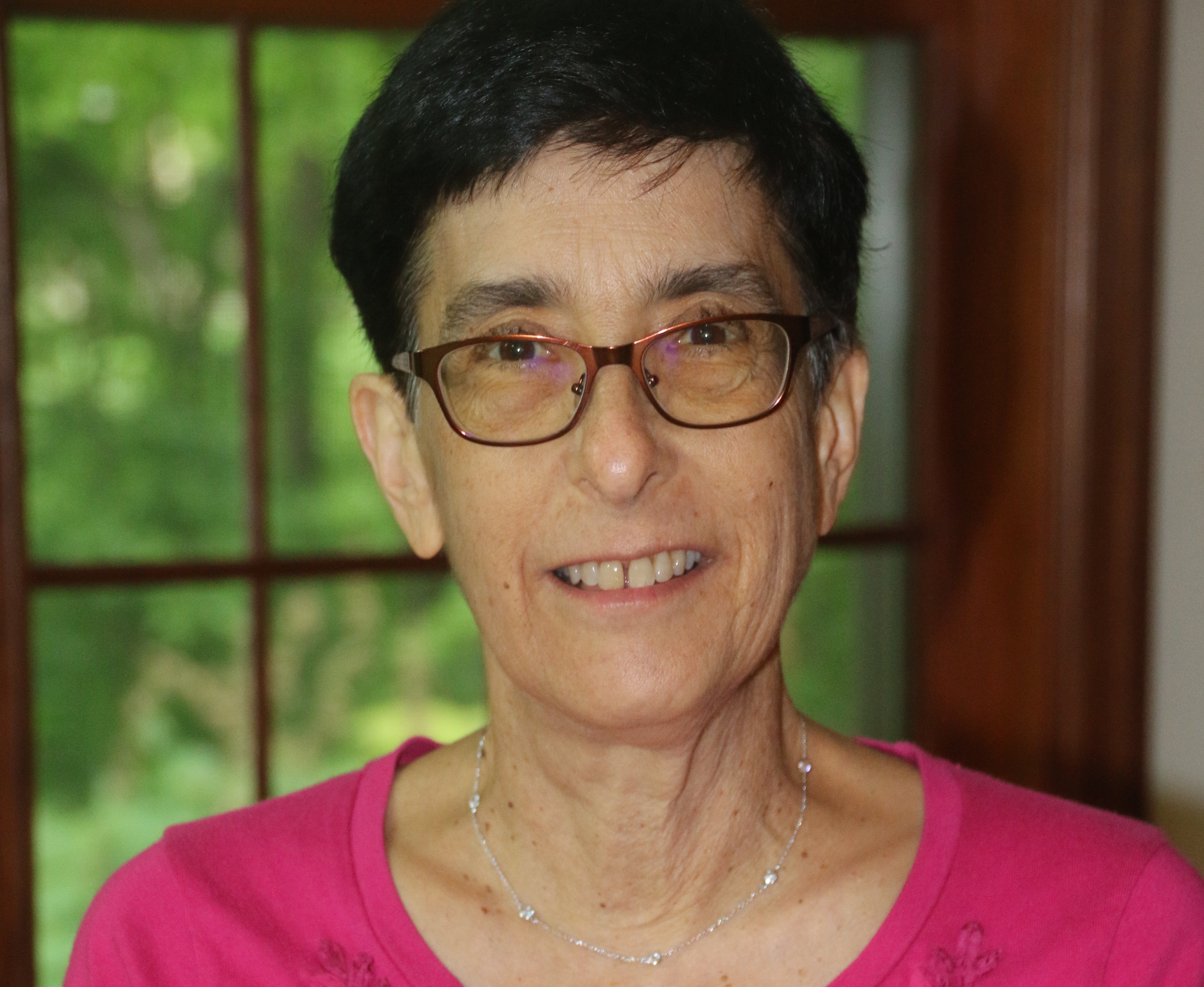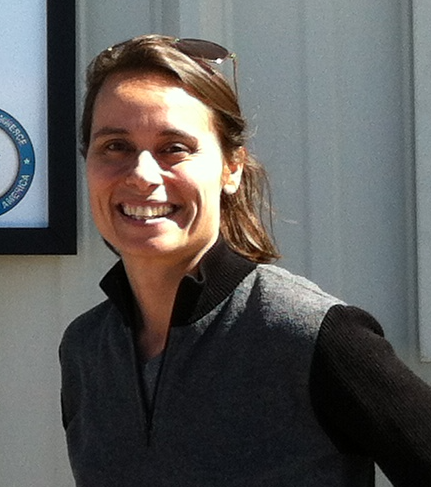Register
Click here to register on-line and pay by credit card by Tuesday, Oct 17, 2017 at 5:00pm.
Fall 2017 SoCal-Nev Section Meeting
Irvine Lecture Hall
Chapman University
Saturday, October 21, 2017, 8:00-4:10
(Directions and Map)
Tentative Program
- 8:00-12:00 Registration
Courtyard, Irvine Lecture Hall - 8:00-10:30 Refreshments
Lobby, Irvine Lecture Hall - 8:30-4:10 MAA Book Sale
Lobby, Irvine Lecture Hall
Organized by Richard Katz and Michael Hoffman, CSU Los Angeles - 9:00-10:00 Invited Address by Erica Flapan
Topological and Geometric Symmetries of Molecular Structures
Irvine Lecture Hall
- 10:00-10:15 Section Business Meeting
- 10:30-12:30 Contributed Paper Sessions
View the call for papers
Beckman Hall
Organized by Gail Tang, University of LaVerne - 12:30-1:30 Lunch Break
Lunches distributed in the Irvine Lecture Hall lobby
- 1:30-2:30 Invited Address by Bogdan Suceava
Curvature: From Nicole Oresme (1320-1382) to Contemporary Interpretations
Irvine Lecture Hall
- 2:30-3:00 Refreshments
Lobby, Irvine Lecture Hall
- 3:00-4:00 Invited Address by Lily Khadjavi
Mathematics For Social Justice, From Basic Examples to Unexpected Journeys
Irvine Lecture Hall
Directions and Maps
Chapman University is located in the city of Orange. Directions to the campus can be found on their Directions and Maps page.
On the campus map, the Irvine Lecture Hall (numbered 25 on the map) and Beckman Hall (numbered 3), are both on the right center of the map.
Parking: The most convenient parking is in lot LA, which is located under Wilson Field (the football field). The entrance is at the corner of E. Walnut Ave and N. Orange St.
Parking Permits: Attendees can print out and use the attached parking permit (for free!). Follow the guidelines on the permit for display info. If you forget print/bring this event specific permit, you will need to purchase a permit for $5 at one of the permit kiosks in the lot.
Registration Information
Register
Click here to register on-line, and pay by credit card by Tuesday, Oct 17 at 5:00pm PDT.
Registration Fees
| Registration only | |
| Nonmember | $50 |
| MAA Member | $45 |
| Student | $15 |
Box Lunch
Each lunch includes a sandwich, chips, cookie, fruit salad, and either water or soft drink. The sandwich choices are:
|
|
| Add lunch | $12 |
On-site registration will be available for the meeting, but will be $5 more than the pre-registration charge.
Register on-line
Click here to register on-line and pay by credit card (deadline is Tuesday October 17th by 5:00pm).
For registration questions or problems, contact Ernie Solheid (esolheid at fullerton.edu or 657-278-7023).
Erica FlapanPomona College |
Erica Flapan joined the faculty at Pomona College in 1986. Since 2006, she has been the Lingurn H. Burkhead Professor of Mathematics at Pomona College. In addition to teaching at Pomona College, Flapan taught at the Summer Mathematics Program for freshmen and sophomore Women at Carleton College from 2000 until 2015. In 2011, Flapan won the Mathematical Association of America’s Haimo award for distinguished college or university teaching of mathematics. Then in 2012, she was selected as an inaugural fellow of the American Mathematical Society. From 2015-2017, she was a Polya Lecturer for the MAA. Erica Flapan has published extensively in topology and its applications to chemistry and molecular biology. In addition to her many research papers, she has published an article in the College Mathematics Journal entitled “How to be a good teacher is an undecidable problem,” as well as four books. Her first book, entitled ``When Topology Meets Chemistry" was published jointly by the Mathematical Association of America and Cambridge University Press. Her second book entitled ``Applications of Knot Theory," is a collection of articles that Flapan co-edited with Professor Dorothy Buck of Imperial College London. Flapan also co-authored a textbook entitled ``Number Theory: A Lively Introduction with Proofs, Applications, and Stories" with James Pommersheim and Tim Marks, published by John Wiley and sons. Finally, in 2016, the AMS published her book entitled “Knots, Molecules, and the Universe: An Introduction to Topology”, which is intended for first and second year college students. |
Topological and Geometric Symmetries of Molecular Structures
How does a chemist know that a molecule that he or she has synthesized
has the desired form? Most non-biological molecules are too small to see in
a microscope or even with the help of an electron micrograph. So chemists
need to collect experimental data as evidence that a synthetic molecule has
a particular form. One approach to this is to try to match the experimental
data about the symmetries of the molecule to the symmetries of a physical
model of the desired form. But molecules which are not completely rigid may
have symmetries that are absent from the model. In such a case, topology,
which is the study of deformations of objects in space, can help interpret
the data. In this talk we will explore topological and geometric approaches
to studying the symmetries of complex molecular structures.
Lily KhadjaviLoyola Marymount University |
Lily Khadjavi is an Associate Professor of Mathematics at Loyola Marymount University in Los Angeles. She earned her bachelor’s degree from Harvard University and her PhD in Mathematics from the University of California, Berkeley, and she has been a Visiting Scholar at the University of Queensland, in Brisbane, Australia; U.C. Berkeley; and the John Jay College of Criminal Justice’s Research and Evaluation Center in New York. She serves as a co-chair organizing the Infinite Possibilities Conference, which builds community for women of color in the mathematical sciences. Since 2013, she has taught in Caltech’s Freshman Summer Research Institute, working with underrepresented students. Her publications are in number theory and in the intersection of mathematics and social justice, and the National Science Foundation has funded her work to support retention of underrepresented groups in mathematics, both for the Association of Women in Mathematics and for the Infinite Possibilities Conference. Dr. Khadjavi serves on the boards of Building Diversity in Science, the Barbara Jordan Bayard Rustin Coalition, and the Harvard Gender and Sexuality Caucus. |
Mathematics for Social Justice, From Basic Examples to Unexpected Journeys
In Mathematics and Democracy, Lynn Steen and his collaborators set an inspiring goal, for curricula and instruction that: ``empower people by giving them the tools to think for themselves, to ask intelligent questions of experts, and to confront authority confidently.’' In this talk, we pursue Steen’s goal by featuring several examples of applications of mathematics and statistics to issues of social justice, such as racial profiling and environmental justice. Some applications simply involve single class meetings while others build over the course of a term, but all invite students to raise questions of their own. These topics can take instructors beyond the classroom to unexpected places.
Bogdan SuceavaCSU Fullerton |
Bogdan Suceavă is a Professor of Mathematics at California State University, Fullerton. He received his undergraduate degree and his master in geometry degree from the University of Bucharest, and his doctoral degree from Michigan State University. His publications cover a variety of topics including differential geometry, metric geometry, history of mathematics, mathematical education, the theory of inequalities, and limiting phenomena for sequences and series. Since 2011, he is the coordinator of the Fullerton Mathematical Circle, an outreach program of the Department of Mathematics at CSUF. |
Curvature: From Nicole Oresme (1320-1382) to Contemporary Interpretations
The concept of curvature appears for the first time in the monograph titled De configurationibus, written by Nicole Oresme around 1350. We describe this contribution and its historical context, as well as further implications of Oresme’s “doctrine of configurations”. Additionally, we plan to explore a few recent interpretations of the idea of curvature, as it appears in the geometry of curves, surfaces and hypersurfaces.
Contributed Paper Session
You are invited to submit abstracts for the Contributed Paper Session of the Fall 2017 Section Meeting of the MAA, taking place on Saturday, October 21, 2017 at Chapman University. The talks will each be 15 minutes with a 5-minute question and transition period.
These sessions accept contributions in all areas of mathematics, including research and pedagogy, and all complete proposals will be considered. The selection of talks will be based on interest to the expected audience, on common themes with other submissions, and on scheduling constraints.
Applications to present in the contributed paper session are submitted online and are due by 12 noon on Wednesday October 4, 2017. Applications include submitting an abstract (max 180 words) using the specified LaTex template given in the example below (downloadable tex file of sample,
compiled pdf version of sample).
\documentclass{article}
\newcommand{\presenter}[1]{\par\textbf{Presenter(s):}\ #1}
\newcommand{\others}[1]{\par\textbf{Other Author(s):}\ #1}
\renewcommand{\title}[1]{\par\textbf{Title:}\ #1}
\renewcommand{\abstract}[1]{\par\textbf{Abstract:}\ #1}
\newcommand{\theme}[1]{\par\textbf{Talk theme(s):}\ #1}
\newcommand{\audience}[1]{\par\textbf{Audience:}\ #1}\begin{document}
\presenter{Robben Teuffel and Robert Aroutiounian, CSU Channel Islands}
\others{Research advisor: Dr. Kathryn Leonard, CSU Channel Islands} %if applicable
\title{Skeletal Shape Modeling of the Corpus Callosum: Geometry-Based Classification for Automated Schizophrenia Diagnosis}
\abstract{Diagnosing schizophrenia is currently a process of trained symptom observation and individual interpretation by doctors. The objective of this research project is to automate diagnosis by using machine learning algorithms to categorize MRI-scanned brain images as healthy or schizophrenic based entirely on shape information of the corpus callosum. We utilize a skeletal shape model called the Blum medial axis (BMA) to capture local symmetries within the boundary curves of our corpus callosum images. We then extract the most visually salient path through the BMA with a depth measure called the Extended Distance Function to (1) decompose the BMA into three subparts associated with the genu, body, and splenium of the corpus callosum, and (2) compute the curvature of a one-dimensional representation of the boundary curve of the corpus callosum. Additionally, to quantify the observed size difference of the genu, we compute Shape Tubularity, which measures the tube-like qualities of shape parts. Finally, we apply supervised and unsupervised learning techniques to these features to distinguish between healthy and schizophrenic brain images.}
\theme{Applied Mathematics}
%Choices include Education/Pedagogy, History/Philosophy of Mathematics, Interdisciplinary Topics, Probability/Statistics, Geometry, Analysis, Number Theory, Graph Theory/Combinatorics, Algebra, Applied Mathematics, Topology, Linear Algebra, etc.
\audience{Linear Algebra and Multivariable Calculus (some data science knowledge will help)}\end{document}
Need access to latex to see if your abstract compiles? Overleaf.com is a cloud based latex program with a free registration. There are other options as well.
The application to present DOES NOT constitute registration for the conference. Presenters will be notified of their acceptances by October 11. Presenters should register for the meeting online by October 16 at 5:00pm.
The Student Resources page of the MAA website has useful articles about writing an abstract and giving presentations. Be sure to check it out for helpful tips!
Direct questions to Gail Tang (gtang at laverne.edu).
